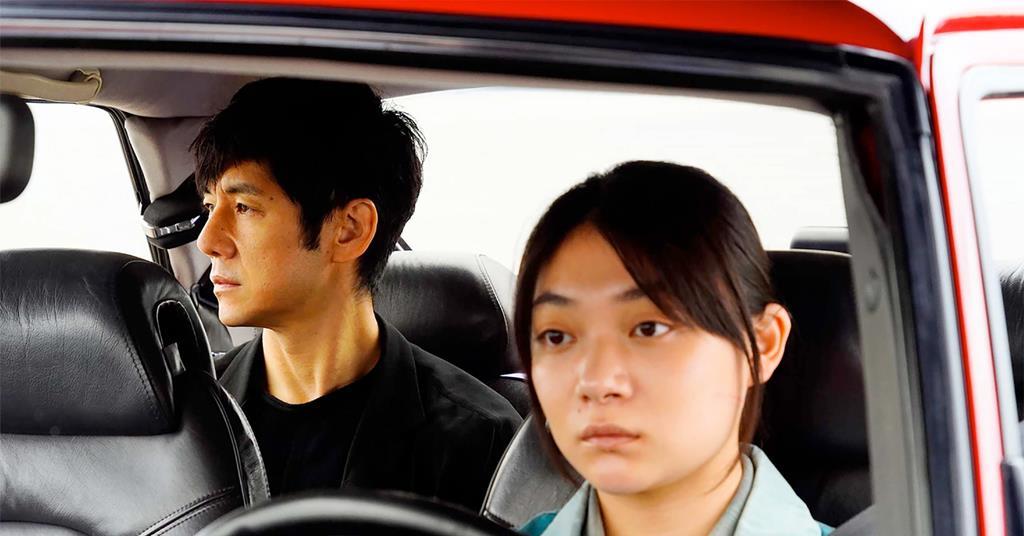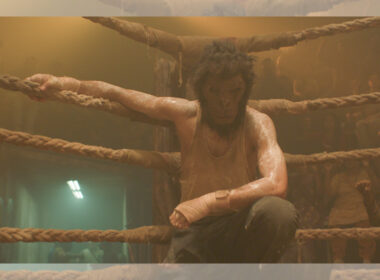Rating: *****
The opening credits of Drive My Car roll forty minutes into the film. It’s not a unique stylistic choice, but it works with the measured pace of this film. Adapted from a short story by Haruki Murakami, director Ryûsuke Hamaguchi kept the cool and grace of the writer’s prose. It comes naturally to him: Hamaguchi’s previous films, Happy Hour and Asako I & II had a similar style. But here, he takes steps only when his characters ask him to, letting their worries, concerns, fears, and trauma bubble until it proves to be too overwhelming. No one spews useless exposition. Everything in its due course.
In that long first act, Hamaguchi and his writer partner Takamasa Oe give us all the context we need about our protagonist Kafuko (Hidetoshi Nishijima), a theatre actor finishing a run of Beckett’s Waiting for Godot and preparing for his role as the title character in Chekov’s Uncle Vanya. Kafuko finds his wife, a successful TV writer, sleeping with another young actor. Not one for confrontation, he finds his therapy by driving around in his red Saab 900. Even on the day he believes she’s about to confess her affair, Kafuko invents an excuse to leave the house and aimlessly drive away. When he returns later that night, he finds her dead.
Two years later, Kafuko travels to Hiroshima to produce a new adaption of Uncle Vanya. With him is just his same trusted red Saab 900 with one cassette on the player – Chekov’s play as read by his wife. He asks to stay in a lodge one hour away from the theatre so he can listen to the tape on the way back and forth every day. Watari (Tôko Miura) is a quiet, stoic, chain-smoking female driver who asks few questions and passes fewer judgments.
The version of Uncle Vanya Kafuko is working on is a curious one. With an international cast of Asian actors, each speaks their language, including Korean sign language, without understanding each other. Kaufko himself was supposed to take the title role as he did before, but when Kôshi Takatsuki (Masaki Okada) reads for a part – the same man who was having an affair with Kafuko’s wife – he offers him the role of the Vanya. Why he does it remains one of the many mysteries the film never reveals, but it could be as a small subconscious of Kafuko to face his nightmares, even if he does not talk about it.
It’s with Watari he finds emotional comfort. Little by little, he opens up about his past and invites her to share her own traumatic experience. There’s a beautiful moment when he asks her to drive him to her favourite place in town; she takes him to a trash disposal facility. It’s not lost that Kafuko is working on a play where no one understands each other, and yet everything is resolved, performed in a city with its very own traumatic past. It makes sense that nothing is rushed or disclosed, and it’s not a cultural feature – it’s because everyone in this film is an adult.
Even when Vanya loses his temper and tries to shoot Serebryakov, when he confesses he could’ve been Schopenhauer or Dostoyevsky, the moment plays in its entirety (that part always reminded me of Marlon Brando’s monologue in On The Waterfront: another story of a man stifled by his self-inflicted guilt). It’s precisely the cathartic punch we think Kafuko deserves. In the real world, though, life doesn’t have that relief. This is why Kafuko listens to his wife’s voice every day in his car, why Hamaguchi gracefully films Hiroshima avoiding the landmarks, thus presenting a city trying hard to heal its wounds by forgetting they are there. Facing one’s demons is easier said than done; but it’s inherently human to not do so.
Hamaguchi directs with the visual honesty of a true poet. It’s hard to explain, but his images have emotional weight and concealed beauty. It helps that during the three hours of this film, not a single minute is wasted on anything that isn’t important or moving. The result is heartbreaking. A contemplative piece that leaves us all with our internal questions, unique to ourselves. It is a beauty to see a film that will mean something to different people.
The irony is that in this cinema landscape, the grand Marvel blockbusters spent the last ten films pretending to explore the idea of collective trauma and failing by making the plot its defining feature. Drive My Car does much more in only three hours.




